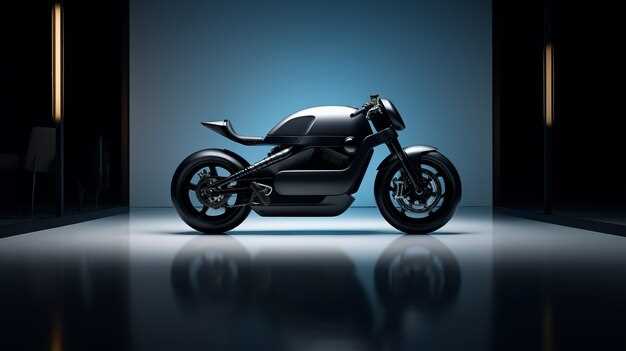

The motorcycle industry is rapidly evolving, with manufacturers constantly innovating to meet the demands of enthusiasts and casual riders alike. As we look ahead to 2025, various factors such as technology advancements, environmental regulations, and changing consumer preferences are poised to shape the landscape of motorcycle brands and their offerings.
This article delves into the top ten motorcycle brands that are expected to dominate the market in 2025. With a focus on emerging trends, we will explore how these companies are adapting their models to appeal to a new generation of riders. From electric bikes to smart technologies, the future promises exciting developments that will redefine the riding experience.
Join us as we examine the predictions for the leading motorcycle brands, highlighting their unique approaches and upcoming models. Whether you are a seasoned rider or just beginning your journey into the world of motorcycles, understanding these trends will provide valuable insights into what to expect in the coming years.
Emerging Trends in Motorcycle Technology for 2025

In 2025, the motorcycle industry is set to witness significant advancements driven by innovative technology. New brands are emerging, harnessing cutting-edge features to enhance rider experience and safety. Electric motorcycles are expected to dominate the market, with battery technology improving to provide longer ranges and faster charging times. This shift aligns with global sustainability goals, appealing to environmentally conscious consumers.
Another prominent trend will be the integration of smart technology into motorcycle designs. Brands are developing connected motorcycles that sync with smartphones, providing real-time data on performance metrics and navigation assistance. Advanced rider-assistance systems, including adaptive cruise control and collision avoidance, will become standard, ensuring safer riding conditions.
Augmented reality (AR) will also make its mark in 2025, offering riders enhanced information displays via smart helmets or visors. These innovations aim to improve situational awareness while reducing distractions, allowing riders to focus on the road ahead. Furthermore, new materials and manufacturing processes are set to emerge, leading to lighter, stronger motorcycles that enhance performance and fuel efficiency.
As consumer preferences evolve, brands will prioritize customization options, enabling riders to personalize their motorcycles like never before. The combination of tech-savvy features, eco-friendly designs, and bespoke options will define the motorcycle landscape in 2025, setting new standards for what consumers expect from their riding experience.
New Model Launches: What to Expect from Leading Brands

As we look forward to 2025, major motorcycle brands are gearing up to unveil exciting new models. Each brand is poised to enhance their offerings by incorporating cutting-edge technology, improved performance, and innovative designs. Here is what enthusiasts can anticipate from some of the leading names in the industry.
First, brands like Harley-Davidson are expected to introduce models that reflect their heritage while integrating modern electric technology. The focus will be on sustainability without compromising the iconic style that riders love. Expect sleek lines and enhanced battery performance in their upcoming electric bike lineup.
BMW is set to roll out several new touring and adventure models tailored for long-distance travel. Enhanced comfort features and advanced navigation systems will be key highlights, catering to riders seeking both luxury and reliability on the road.
Meanwhile, Kawasaki plans to refresh its sportbike lineup with lighter frames and more powerful engines. New models will likely showcase improved aerodynamics and cutting-edge suspension systems, aiming to provide superior handling and performance for racing enthusiasts.
In the off-road segment, brands like Honda will reveal all-new models equipped with state-of-the-art traction control and durability features. These advancements will make off-road adventures more accessible and enjoyable for riders of all skill levels.
Yamaha is anticipated to focus on dual-sport models that merge street and off-road capabilities. Their new designs will likely feature advanced electronic aids, ensuring versatility for varied riding conditions while maintaining robust performance.
In summary, 2025 promises a thrilling year for motorcycle enthusiasts. As leading brands launch their new models, riders can expect a blend of heritage and innovation, creating exciting opportunities for both casual and dedicated motorcyclists alike.
Market Shifts: How Consumer Preferences Will Shape Future Motorcycles
As we progress towards 2025, the motorcycle industry is poised to undergo significant changes driven by evolving consumer preferences. One of the most notable shifts is the rising demand for electric models. As environmental awareness grows, brands are increasingly focused on developing sustainable motorcycles that align with eco-conscious consumer values.
In addition to sustainability, consumers are favoring customization and personalization in motorcycle models. Leading brands are responding by offering extensive options for tailored aesthetics and performance features, allowing riders to express their individuality. This trend reflects a broader movement towards unique ownership experiences in various sectors.
Technology integration is another critical factor influencing future motorcycle designs. Features such as advanced connectivity, smart navigation systems, and safety enhancements are becoming standard expectations. Brands that can seamlessly integrate these technologies into their models will likely capture the attention of tech-savvy riders.
Moreover, there is a noticeable shift towards more accessible models that cater to a broader demographic. Manufacturers are developing lightweight, user-friendly motorcycles without compromising performance. This approach targets new riders and those who prefer urban commuting, highlighting the importance of adaptability in design.
Ultimately, the interplay of these consumer preferences will shape the way brands approach development, marketing, and overall strategy in the upcoming years. Understanding these market shifts is crucial for companies aiming to remain competitive in a rapidly evolving landscape.
